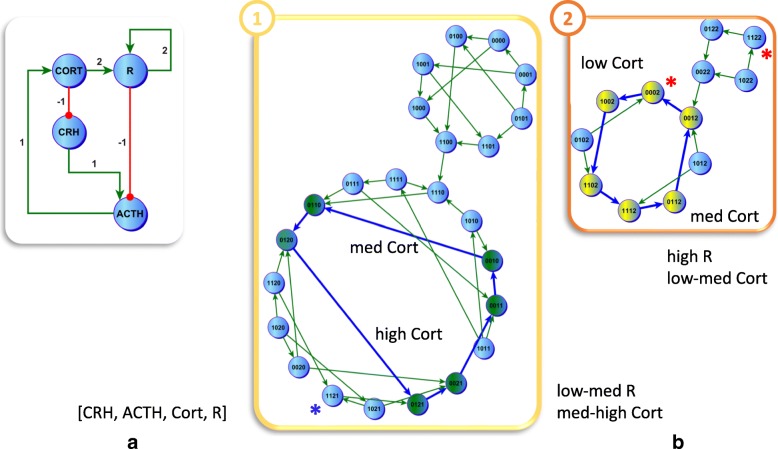Fig. 1.
Recovering Multiple Regulatory Cycles for the HPA Axis. Applying a Priority Class updating scheme to a multi-level regulatory logic model of the hypothalamic-pituitary- adrenal (HPA) axis (a) produced a state transition graph (STG) in [CRH, ACTH, Cort, R] supporting two stable oscillatory cycles (b). The regulatory mode labeled as Healthy (green state nodes) supports oscillation in the state of glucocorticoid receptor R from low to medium expression with cortisol expression (Cort) oscillating from mid to high expression levels. Conversely, in the second regulatory regime Cort expression levels oscillate at the lower end of the range with R persistently over-expressed (yellow nodes). Note that in absence of external disturbances (assumed here), once the system has settled in one or the other of these cycles it will remain locked in that regulatory mode since there are no state transition edges supported by the circuitry that connect these separate attractors or their basins. States identified with an asterisk correspond to stationary states to which the system collapses under a chronic external stress (Figurer 3) that overlap with the oscillatory regime where cortisol spans the lower range (red) or the higher range of expression (blue)

